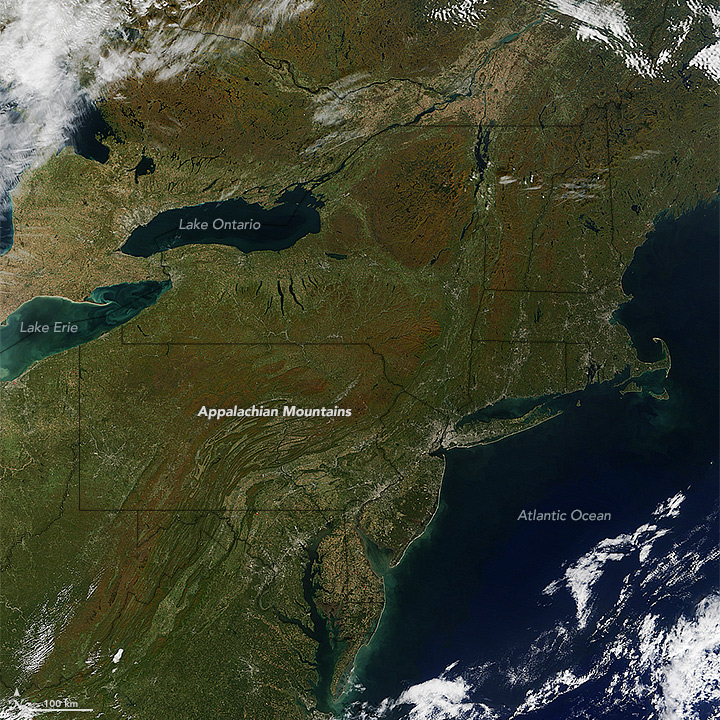It’s time for the annual Fall color display across part of the Northern Hemisphere. The Moderate Resolution Imaging Spectroradiometer (MODIS) on NASA’s Terra satellite captured the colorful changing foliage on October 11, 2015. As temperatures drop and sunlight fades, the leaves begin to change colors. This image was recently featured on NASA’s Earth Observatory.
Past News
- December 2025
- October 2025
- July 2025
- May 2025
- February 2025
- November 2024
- April 2024
- February 2024
- December 2023
- October 2023
- April 2023
- February 2023
- December 2022
- October 2022
- August 2022
- July 2022
- June 2022
- April 2022
- March 2022
- October 2021
- September 2021
- August 2021
- June 2021
- May 2021
- April 2021
- March 2021
- February 2021
- January 2021
- September 2020
- August 2020
- July 2020
- April 2020
- February 2020
- January 2020
- December 2019
- November 2019
- October 2019
- September 2019
- August 2019
- April 2019
- March 2019
- November 2018
- October 2018
- August 2018
- July 2018
- June 2018
- May 2018
- November 2017
- June 2017
- August 2016
- July 2016
- June 2016
- May 2016
- April 2016
- March 2016
- February 2016
- January 2016
- December 2015
- November 2015
- October 2015
- September 2015
- August 2015
- April 2015
- February 2015
- December 2014
- November 2014
- October 2014
- September 2014
- August 2014
- May 2014
- April 2014
- March 2014
- February 2014
- January 2014
- December 2013
- November 2013
- October 2013
- September 2013
- August 2013
- July 2013
- June 2013
- May 2013
- April 2013
- March 2013
- February 2013
- January 2013
- September 2012
- June 2012
- May 2012
- April 2012
- March 2012
- February 2012
- January 2012
News By Instrument
News By Science
- Air quality
- Applications
- Atmosphere
- Carbon Cycle and Ecosystems
- Climate Variability and Change
- Data
- Earth Observatory
- Earth's Surface and Interior
- Education
- Energy Cycle
- Events
- Human Dimensions
- LAADS DAAC
- Landsat
- Orbital Changes
- Platform
- Resources
- Terra Talent Series
- Terra Visits Camp Landsat
- VIIRS
- Water Cycle
- Weather
- Wildfire
Tag: Carbon Cycle and Ecosystems
Carbon Cycle and Ecosystems
Terra Helps See Earth’s 3 Trillion Trees
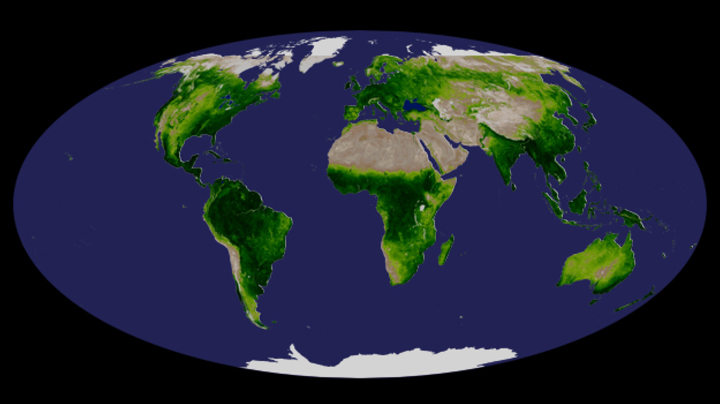 A recent study published in Nature now estimates that there are 3.04 trillion trees on Earth, a number that is almost 8 times higher than previous estimates
A recent study published in Nature now estimates that there are 3.04 trillion trees on Earth, a number that is almost 8 times higher than previous estimates
Scientists rely primarily on remotely-sensed to obtain estimates of global tree populations. Satellites provide the best opportunity to achieve a global perspective, but their view of tree forest canopies from above tends to obscure individual trees and shorter trees, making it difficult to make accurate estimates. In addition, satellites are limited by their spatial resolution, not every tree is as obvious as a Redwood alone in a field. The Redwood example also points to another complication, the definition of a tree, which for most studies, including the one in Nature, is vegetation with woody stems 10 cm in diameter or larger at chest height. Thus, counting trees is a difficult process because they can vary in size and can hide beneath the canopy of larger trees, as well as be too small to be seen in satellite images.
To get a better estimate of the actual number of trees on Earth, researchers combined data from multiple vegetation indexes, including the Enhanced Vegetation Index (EVI) from the Moderate Imaging Spectroradiometer (MODIS) onboard Terra, with actual tree counts for over 430,000 hectares from 14 different biomes on Earth (there is an estimated 4 million hectares of forested land on Earth). Merging the ground measurements and applying them to the different areas of land cover visible through satellite images resulted in the more accurate estimate of tree population possible with surprisingly large results.
Taking Stock of 2014 Fire Emissions
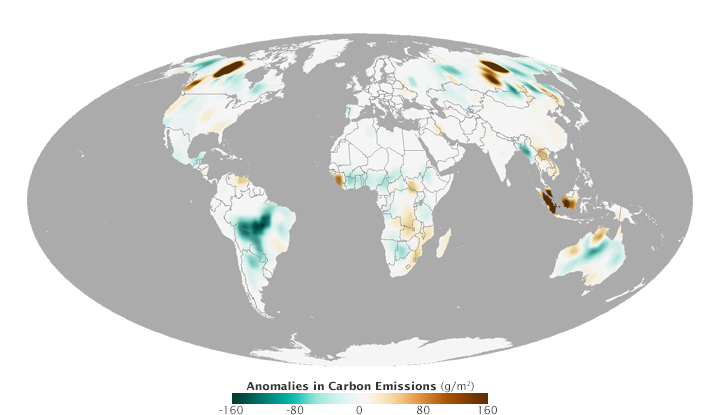
NASA Earth Observatory map by Joshua Stevens and Jesse Allen, using data from the Global Fire Assimilation System (GFAS) and the State of the Climate in 2014 report. Caption by Adam Voiland.
On Earth, there is always something burning. On a typical day in August, the Moderate Resolution Imaging Spectroradiometers (MODIS) on NASA’s Aqua and Terra satellites detect approximately 10,000 active fires, as well as huge swaths of freshly charred land in ecosystems ranging from boreal forests to savanna to tropical forests.
In order to determine how much carbon dioxide and other pollutants all these fires contribute to the atmosphere in a given year, scientists have developed computer models that combine satellite observations of burned area and active fires together with information about vegetation, fuel loads, and other details. Data produced by two computer modeling efforts—the Global Fire Assimilation System (GFAS) and the Global Fire Emissions Database (GFED)—were highlighted in NOAA’s 2014 State of the Climate report, published in the Bulletin of the American Meteorological Society. Read more
Canadian Wildfires Produce River of Smoke
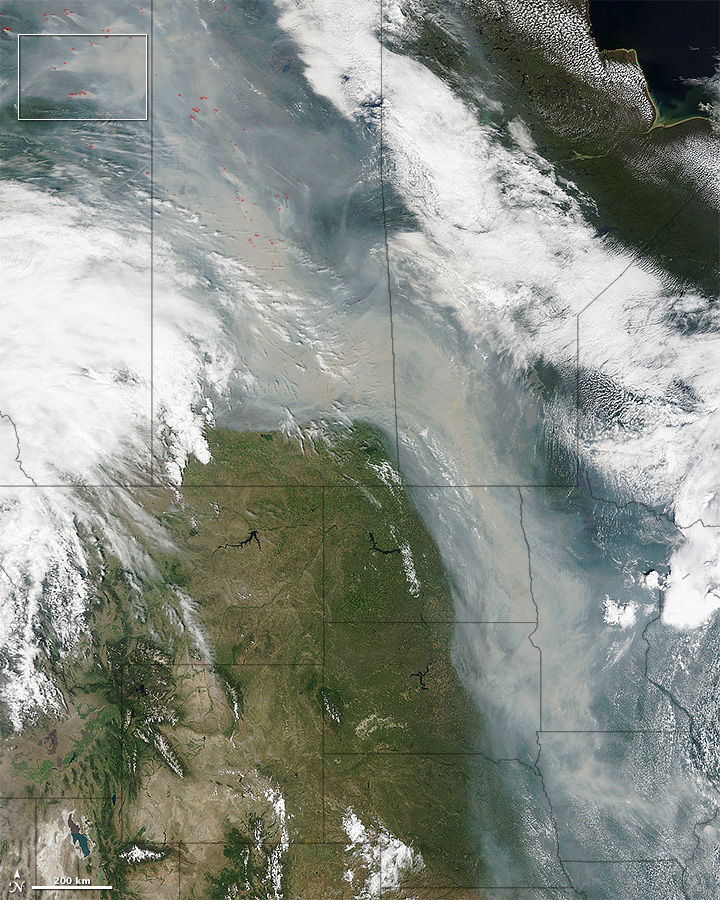
NASA image courtesy Jeff Schmaltz, LANCE/EOSDIS MODIS Rapid Response Team at NASA GSFC. Caption and image cropping by Adam Voiland.
The 2015 fire season got off to an unusually early start in Canada when blazes broke out in the Northwest Territories, British Columbia, and Alberta in late May. As the season has progressed, the air in western Canada—as well as large swaths of the United States—grew gray and hazy with smoke.
Beginning on June 28, a sharp trough in the jet stream sent a river of smoke streaming south into the United States. By June 29, smoke darkened the skies over much of Saskatchewan, Alberta, Manitoba, North Dakota, South Dakota, Minnesota, and Iowa.
On June 29, 2015, the Moderate Resolution Imaging Spectroradiometer (MODIS) on NASA’s Terra satellite captured this image of smoke from hundreds of wildfires in western Canada. Read more
Expanding Burn Scar in Northern Territory
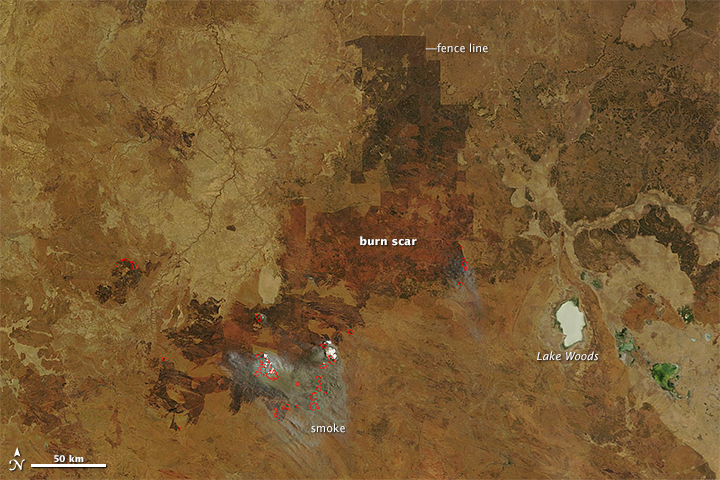
NASA image courtesy Jeff Schmaltz, LANCE MODIS Rapid Response Team at NASA GSFC. Caption by Adam Voiland, with information from Daniel Lindsey (NOAA) and Rick McRae (Australian Capital Territory Emergency Services Agency).
The intense bushfires that strike southern Australia in the summer usually attract the most headlines, but the country’s largest and most frequent blazes actually occur in northern Australia in the spring. In fact, in terms of sheer area burned, satellite observations show that over 98 percent of large fires in Australia occur well outside of densely populated southeastern and southwestern parts of the country.
A fire that began burning in Northern Territory on September 10, 2014, offers a prime example of just how expansive fires from this part of the continent can become. After racing through grasslands for just a few weeks, the fire had charred an area about the size of Massachusetts by October 8, 2014.
The Moderate Resolution Imaging Spectroradiometer (MODIS) on NASA’s Terra satellite captured this sequence of images showing the progression of the fire. Read more


